CITY WALK (Day 2 - part 1)
We decide to spend the day walking around the French Quarter to get a lay of the land.

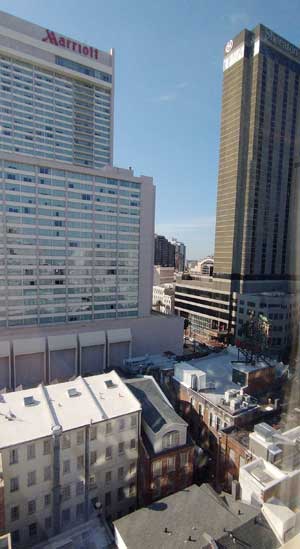
Our spectacular hotel view


Each roof was packed with air-conditioners!


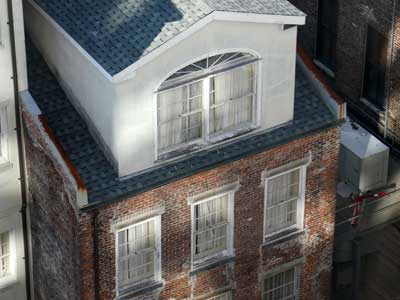

(right) A glimpse of neighboring Canal Street
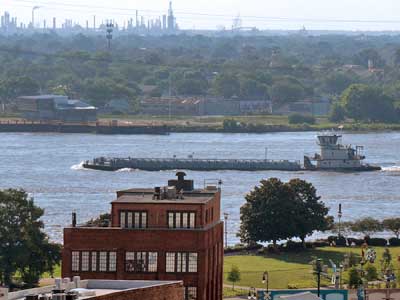

For breakfast, we went to the restaurant downstairs.




After we'd fueled up, we were ready to take on the town! Kind of. As soon as we stepped outside, we were hit with very hot, very humid weather! This was going to be tough.


New Orleans ... and the French Quarter. The city of New Orleans is located in the southern part of Louisiana. It's wedged between Lake Pontchartrain and the Mississippi River. The French Quarter is the older section of town.
New Orleans is pronounced "New Or-lins" or "New Or-lee-yuns."
It is not pronounced "Naw-lins" or "New Orl-eens."
People also use the acronym "NOLA" to refer to the city (New Orleans, Louisiana).
The French first arrived in the "New World" in the 1520s, seeking wealth as well as a route to the Pacific Ocean. They established forts and settlements in much of eastern North America, stretching from Canada on down to the Gulf of Mexico. In 1682, they came down the Mississippi River to its delta and claimed the area for France.
The town of La Nouvelle-Orleans was founded by Jean Baptiste Le Moyne (a French-Canadian colonial administrator born in Montreal to French colonist parents) in 1718, taking its name from Philippe II, Duke of Orléans, who served as Regent of the Kingdom of France from 1715 to 1723. The city was built in a grid formation. The houses were spaced far apart with gardens in between.


Jean Baptiste Le Moyne de Bienville (1680 - 1767) .... Philippe II, Duke of Orléans (1674 - 1723)
Starting in 1762, the Seven Years’ War was a major conflict between the major European powers (mostly France and Great Britain) that spread over four continents. Near the end of the war, the balance of power in the Americas had drastically shifted. The British had captured many important French colonies, including Canada and several Caribbean islands. Hoping to turn the tide, King Louis XV of France convinced his cousin, King Carlos III of Spain, to enter the war on his side in 1761... but it didn't help enough. As compensation for its losses, France ceded its Louisiana colony to Spain in 1762 in the secret Treaty of Fontainebleau and the war ended the following year. With the area already in Spanish possession, the British couldn't claim it as the spoils of war.
Following the establishment of the United States in 1776, Americans controlled the area east of the Mississippi River and north of New Orleans. They, however, also wanted the port connecting the river to the sea. They soon got their chance. In 1800, with a plan to reestablish the French colonial empire, Napoleon Bonaparte (who had seized power in 1799) regained the area by trading with Spain, giving them in exchange some territories in Tuscany, Italy. But in 1803, France once again found itself at war with Great Britain. Suddenly needing more funds, as well as having concern of losing his colonies to the British, he sold the massive territory to the U.S. in the Louisiana Purchase.
Although this area is called the French Quarter (since it was the original town location), two large fires destroyed all of the original structures, so all current buildings are ironically from the Spanish period. They used brick and plaster instead of timber. They also switched to buildings constructed close together, often with shared walls and courtyards.
We wandered aimlessly while admiring the incredible buildings.

Click for a larger view



(right) Named after Pierre Le Moyne d'Iberville (1661 - 1706). He had eleven brothers, one of which was Jean Baptiste Le Moyne.
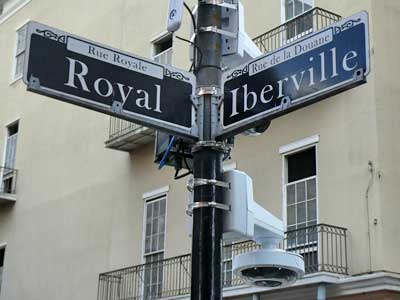



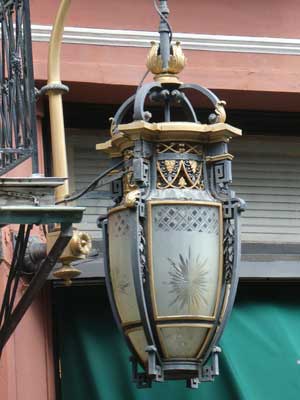


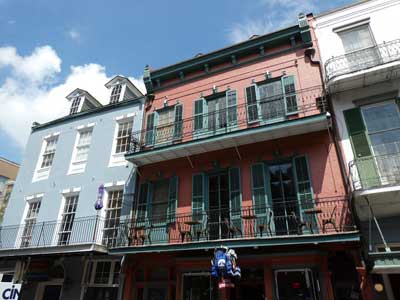




(left) Louisiana state flag with a pelican feeding its young. The symbol had been around since the Middle Ages and represented the spirit of self-sacrifice. It was chosen by the first governor of the Orleans Territory, William C. C. Claiborne, probably because the pelican was a familiar symbol to Catholics at that time.



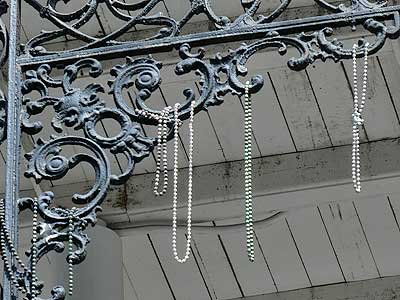
Mardi Gras beads hung from metal porch railings.
Early colonial structures resembled their counterparts in France. The straight-sided structures worked well in cooler climates, but Louisiana had steamy summers. Outdoor wooden galleries, like those used in the Caribbean, provided an airy yet protected space. By 1825, the Leeds Iron Foundry had refined cast iron. Melted iron could be poured into molds, allowing for more delicate designs. This “iron lace” began being used extensively in the mid-1850s, leading to the wrap-around galleries now seen on many of the buildings.


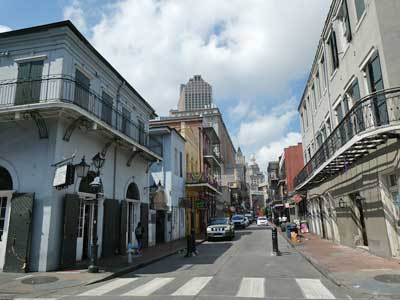

We popped into the Old Absinthe House. Originally built in 1752, the Old Absinthe House was destroyed in the 1788 Great Friday Fire. All that survived was its fireplace. It was reconstructed in 1806 by two Spaniards, Pedro Front and Francisco Juncadelia, who operated a grocery store there for forty years. Later, it became famous for its mixture of absinthe and sugar water. Because it contained wormwood, the importation and sale of absinthe was made illegal in 1912, although it was legalized again in 2007.
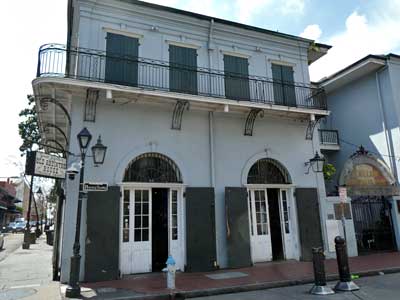

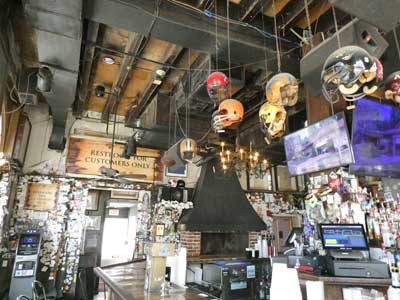

Inside, there was lots of football memoribilia.


(right) The absinthe tap


A glimpse into another section of the old building
return • continue

